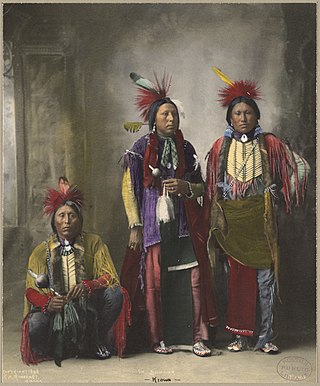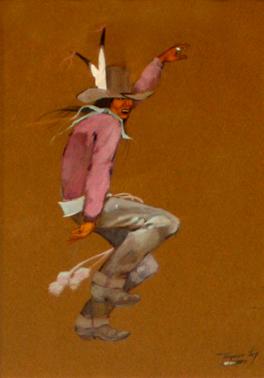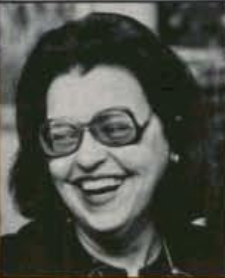
Kiowa or CáuigúIPA:[kɔ́j-gʷú]) people are a Native American tribe and an Indigenous people of the Great Plains of the United States. They migrated southward from western Montana into the Rocky Mountains in Colorado in the 17th and 18th centuries, and eventually into the Southern Plains by the early 19th century. In 1867, the Kiowa were moved to a reservation in southwestern Oklahoma.

The United Keetoowah Band of Cherokee Indians in Oklahoma is a federally recognized tribe of Cherokee Native Americans headquartered in Tahlequah, Oklahoma. According to the UKB website, its members are mostly descendants of "Old Settlers" or "Western Cherokees," those Cherokees who migrated from the Southeast to present-day Arkansas and Oklahoma around 1817. Some reports estimate that Old Settlers began migrating west by 1800, before the forced relocation of Cherokees by the United States in the late 1830s under the Indian Removal Act.

Bacone College, formerly Bacone Indian University, is a private college in Muskogee, Oklahoma. Founded in 1880 as the Indian University by missionary Almon C. Bacone, it was originally affiliated with the mission arm of what is now American Baptist Churches USA. Renamed as Bacone College in the early 20th century, it is the oldest continuously operated institution of higher education in Oklahoma. The liberal arts college has had strong historic ties to several tribal nations, including the Muscogee and Cherokee. The Bacone College Historic District has been on the National Register of Historic Places listings in Muskogee County, Oklahoma since 2014.
Barbara McAlister is a mezzo-soprano Native American opera singer from Muskogee, Oklahoma.
Lois Smoky Kaulaity (1907–1981) was a Kiowa beadwork artist and a painter, one of the Kiowa Six, from Oklahoma.
Cecil Dick, or Degadoga (1915–1992) was a well-known Cherokee artist often referred to as "the Father of Cherokee Traditional Art".
Walter Richard West Sr., was a painter, sculptor, and educator. He led the Art Department at Bacone College from 1947 to 1970. He later taught at Haskell Institute for several years. West was an enrolled citizen of the Cheyenne and Arapaho Tribes.
The Bacone school or Bacone style of painting, drawing, and printmaking is a Native American intertribal "Flatstyle" art movement, primarily from the mid-20th century in Eastern Oklahoma and named for Bacone College. This art movement bridges historical, tribally-specific pictorial painting and carving practices towards an intertribal Modernist style of easel painting. This style is also influenced by the art programs of Chilocco Indian School, north of Ponca City, Oklahoma, and Haskell Indian Industrial Training Institute, in Lawrence, Kansas and features a mix of Southeastern, Prairie, and Central Plains tribes.

Jerome Richard Tiger was a Muscogee Nation-Seminole painter from Oklahoma. Tiger produced hundreds of paintings from 1962 until his death in 1967.

Marcelle Sharron Ahtone Harjo is a Kiowa painter from Oklahoma. Her Kiowa name, Sain-Tah-Oodie, translates to "Killed With a Blunted Arrow." In the 1960s and 1970s, she and sister Virginia Stroud were instrumental in the revival of ledger art, a Plains Indian narrative pictorial style on paper or muslin.
David Emmett Williams was a Native American painter, who was Kiowa/Tonkawa/Kiowa-Apache from Oklahoma. He studied with Dick West at Bacone College and won numerous national awards for his paintings. He painted in the Flatstyle technique that was taught at Bacone from the 1940s to the 1970s.
TahneeAhtoneharjo-Growingthunder, is a Kiowa beadwork artist, regalia maker, curator, and museum professional of Muscogee and Seminole descent, from Mountain View, Oklahoma.
Jimmie Carole Fife Stewart is a Muscogee (Creek) art educator, fashion designer, and artist. After graduating from the Chilocco Indian School and taking courses at the University of Arizona, she earned a degree from Oklahoma State University and began working as a teacher. After a six-year stint working for Fine Arts Diversified, she returned to teaching in 1979 in Washington, Oklahoma. Primarily known as a painter, using watercolor or acrylic media, Fife-Stewart has also been involved in fashion design. Her works have been shown mostly in the southwestern United States and have toured South America. Having won numerous awards for her artworks, she was designated as a Master Artist by the Five Civilized Tribes Museum in 1997.

Valjean McCarty Hessing was a Choctaw painter, who worked in the Bacone flatstyle. Throughout her career, she won 9- awards for her work and was designated a Master Artist by the Five Civilized Tribes Museum in 1976. Her artworks are in collections of the Heard Museum of Phoenix, Arizona; the Philbrook Museum of Art in Tulsa, Oklahoma; the Southern Plains Indian Museum in Anadarko, Oklahoma; and the Wheelwright Museum of the American Indian of Santa Fe, New Mexico, among others.
Jeanne Rorex-Bridges is painter and illustrator based in Oklahoma. She is a member of the Echota Cherokee Tribe of Alabama, a state-recognized tribe.
Mary Adair is a Cherokee Nation educator and painter based in Oklahoma.

Jane McCarty Mauldin was a Choctaw artist, who simultaneously worked in commercial and fine art exhibiting from 1963 through 1997. Over the course of her career, she won more than 100 awards for her works and was designated as a "Master Artist" by the Five Civilized Tribes Museum in Muskogee, Oklahoma. She has works in the permanent collections of the Heard Museum, the Heritage Center of the Red Cloud Indian School and the collections of the Department of the Interior, as well as various private collections.
Bill Glass Jr. is a Cherokee Nation ceramic artist, sculptor, and public artist, who was named a Cherokee National Treasure in 2009.







